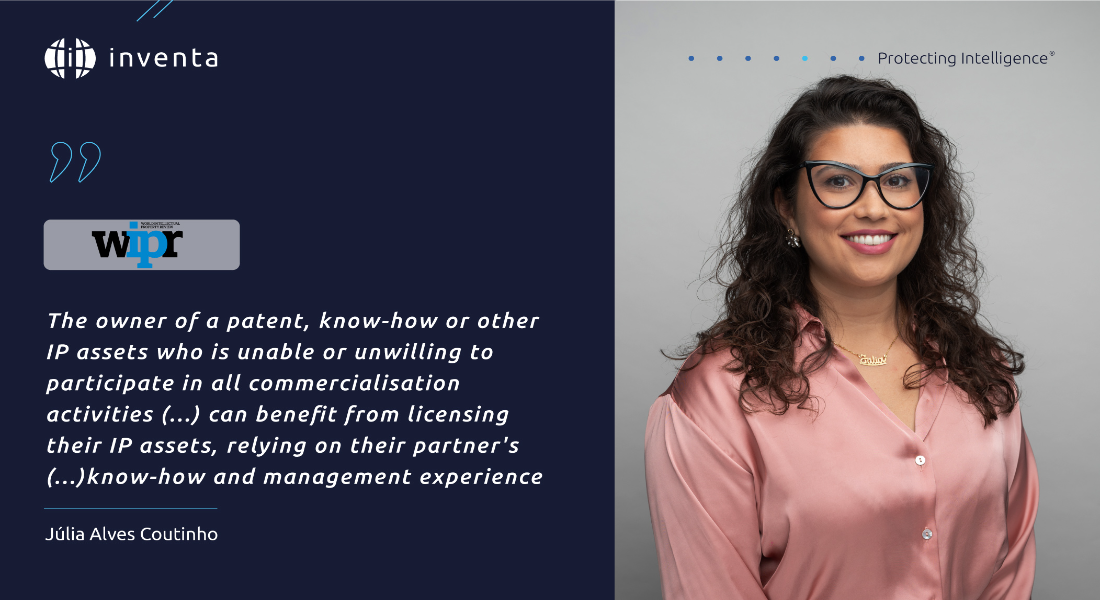
IP licence agreements: an overview
Intellectual property rights cover exclusive rights originating from the mental labour of their creators or inventors and include copyright, trademarks, industrial designs, patents, geographical indications, and plant variety rights.
IP rights may be the subject of a licence, where the proprietor of an IP right (the licensor) while maintaining the ownership, authorises a third person (the licensee) to use and exploit the IP right during trade, under the terms and conditions set out by both parties.
Licensing offers the owner the valuable opportunity to expand their business into new markets, add revenue streams through royalties, develop partnerships, become recognised, and continue to decide what to do with their right after the licensor retains ownership.
The owner of a patent, know-how or other IP assets who is unable or unwilling to participate in all commercialisation activities (eg, technological development, manufacturing, market expansion) can benefit from licensing their IP assets, relying on their partner's capacity, know-how and management experience.
The mere consent or tolerance of the owner for a third party to use their IP right is not equivalent to a licence. Furthermore, if the proprietor of an IP right intends to sell their right to a third party, the legal route is the assignment, when there is a transfer of ownership of an IP asset from one person/entity to another person/entity.
Through a licence, it is possible to give someone permission to, for example:
- publish a text, record music, use software, synchronise music in a film, reproduce a drawing;
- use a registered trademark in a different territory;
- reproduce a registered industrial design;
- produce, use, or sell a patented product or service;
- produce, use, or sell a product protected by a geographical indication;
- grow or market plants of a variety protected by plant variety rights.
These are examples of one type of authorisation that can be given by the owner, but several uses may be derived from one IP right. Also, the owner can authorise different types of use for different entities and, in the case of non-exclusive licences, one type of use can be licensed.
A licence agreement or a licence contract must be in writing and may be registered with the IP office or the entity in which the IP right was previously registered and used in the event of a dispute in extrajudicial or judicial contexts.
In some cases, it may be useful or necessary to keep some information confidential, such as the piece of IP concerned (namely the technology for which no patent application has yet been filed, or another trade secret) and/or the licensing agreement itself, especially its financial aspects. In this sense, it is recommended to sign a non-disclosure agreement with the potential licensee before the signature of the licence agreement.
A licence agreement can be adapted to the needs of the parties, but usually comprises the following:
- identification of the parties;
- licence’s object;
- manner of use and exploitation of this object;
- type of licence—exclusive, semi-exclusive (licensor and licensee use and exploit the IP right), non-exclusive, or open (any third party who meets the requirements established by the licensor will receive a licence, eg, a creative commons licence);
- obligations of both parties;
- type of payment (or the consensus of non-payment)—it is possible to determine a licence fee (fixed period amount), royalties (percentage of the profits) or a one-off amount (lump sum), or even combine the types of payment, namely a lump sum upon signature of the contract and royalties during the exploitation;
- territory of appliance;
- licence’s duration;
- possibility to grant sub-licences and to transfer the licence;
- regulation of new developments;
- confidentiality;
- settlement of infringements;
- applicable law, and;
- competent court or arbitration/mediation.
(...) it is worth noting that a proprietor can give multiple licences regarding one IP right and these can be related to different geographical areas and different types of exploitation of the right.
The licence can be granted from the creator to the final consumer, or from the creator to the entity that will be responsible for promoting the creator’s work and commercialising the creator’s rights with other market players, depending on the industry sector.
Also, it is worth noting that a proprietor can give multiple licences regarding one IP right and these can be related to different geographical areas and different types of exploitation of the right.
Regarding the object of the licence, the kinds of agreements can vary depending on the intellectual property right in question, with copyright, trademark and technology licence agreements being the most common.
It is worth mentioning the cross-licence agreements too, which give two or more parties the right to use each other’s IP right without worrying about lawsuits. These agreements can be particularly common in the fields of patents, software, and designs, in which each party holds different IP rights for the same product.
In addition to the pure intellectual property licence, there are also other sorts of broader commercial agreements in which IP rights are licensed, such as merchandise, franchising, and joint venture agreements.
Regardless of the type of agreement, it is always important to be aware of the legislation that will regulate the agreement and the formalities required in relation to that specific intellectual property right.
This is a co-published article, which was originally published in the World Intellectual Property Review (WIPR)
Lista de Territórios
Não existem resultados para a sua pesquisa.
- África
- África do Sul
- Angola
- Argélia
- Benin
- Botsuana
- Burkina Faso
- Burundi
- Cabo Verde
- Camarões
- Chade
- Comores
- Costa do Marfim
- Djibuti
- Egito
- Eritreia
- Eswatini (Suazilândia)
- Etiópia
- Gabão
- Gâmbia
- Gana
- Guiné
- Guiné-Bissau
- Guiné-Equatorial
- Lesoto
- Libéria
- Libia
- Madagáscar
- Maiote
- Malaui
- Máli
- Marrocos
- Maurícias
- Mauritânia
- Moçambique
- Namíbia
- Níger
- Nigéria
- Quénia
- República Centro-Africana
- República Democrática do Congo
- República do Congo
- Reunião
- Ruanda
- Saara Ocidental
- São Tomé e Principe
- Seicheles
- Senegal
- Serra Leoa
- Somália
- Sudão
- Sudão do Sul
- Tanzânia
- Togo
- Tunísia
- Uganda
- Zâmbia
- Zanzibar
- Zimbábue
- África (OAPI)
- África (ARIPO)
- Mais Territórios
- Macau
- Maldivas
- Portugal
- Timor Leste
- Marca da União Europeia (EUIPO)
- Marca Internacional (Sistema de Madrid)
- Patente Europeia (IEP)
- Tratado de Cooperação em matéria de Patentes (PCT)




